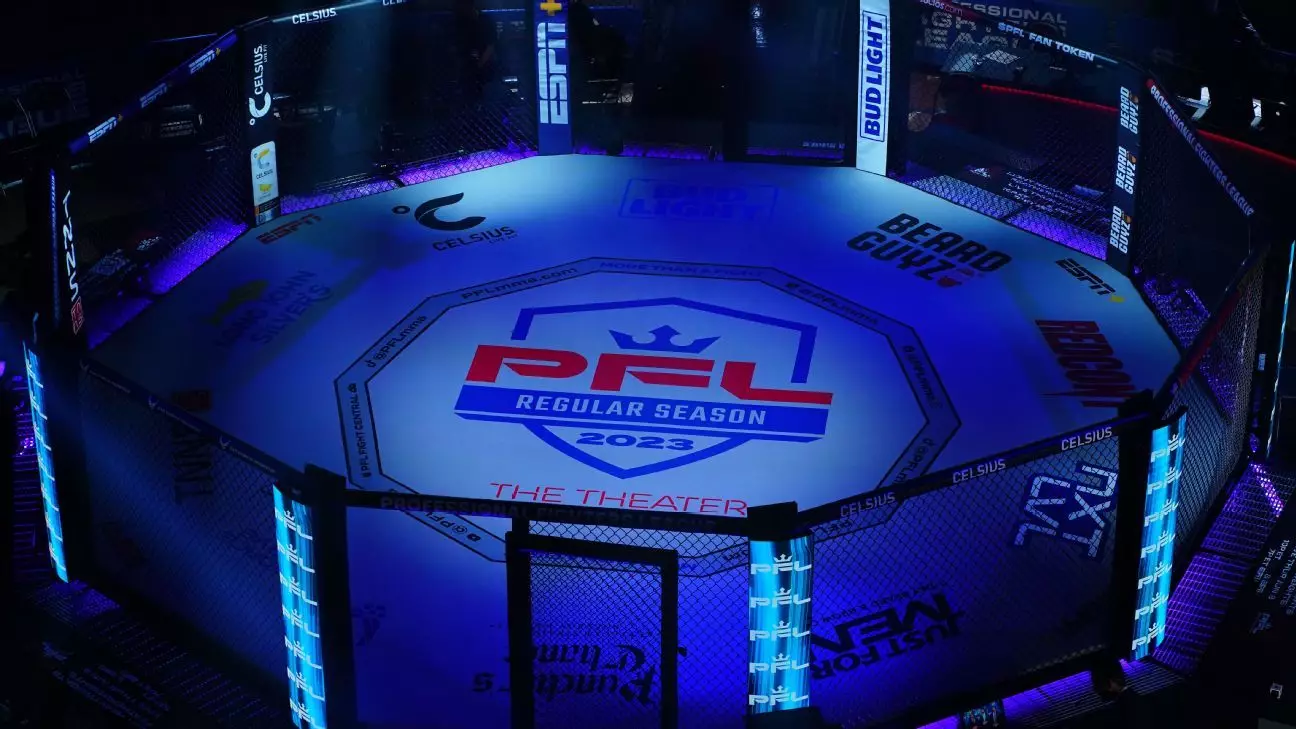The Professional Fighters League (PFL), an organization known for its innovative approach to mixed martial arts, is gearing up for significant changes in 2025 that could redefine the contours of combat sports. As the PFL prepares to unveil a revamped tournament structure and integrate the Bellator MMA fighters into its ranks, the landscape of MMA ownership, competition, and viewer engagement is poised for a striking transformation.
Starting in 2025, the PFL will abandon its established “season” and playoff format, which has been a hallmark since its inception in 2018. Instead, the promotion will initiate a new World Tournament that will consist of three single-elimination matchups across eight weight classes, each featuring eight fighters. This significant pivot was announced by PFL’s CEO, Peter Murray, who emphasized that the compressed competition timeline would enhance viewer engagement and broaden the audience base. The innovative structure offers fighters a one-shot opportunity, heightening the stakes and potentially elevating the drama that fans have come to love in combat sports.
By opting for single-elimination rounds, the PFL aims to streamline its tournament process while ensuring that the competition remains merit-based. Murray’s perspective reveals a crucial understanding of the sport: the audience craves excitement, unpredictability, and clarity in championship contention. This bold move echoes trends in other sports, where elimination formats often lead to higher stakes and considerable viewer investment due to the immediate consequences of each bout.
Integrating Bellator: A Strategic Move
In another major announcement, the PFL will discontinue its association with the Bellator MMA brand, which came as a result of acquiring the organization in late 2023. While the PFL had operated Bellator as a separate entity prior, the integration is set to streamline operations and create a unified championship structure—signaling the end of Bellator as an independent promotion established in 2008.
Gathering Bellator’s existing roster under one umbrella is not just a tactical decision; it symbolizes a deeper ambition to enhance PFL’s standing within the MMA community. With the merger, the PFL aims to cultivate a richer brand identity, creating a singular path for championships and title defenses. However, questions remain regarding the status of current Bellator champions and whether they will transition into the PFL’s championship rank or contend for vacant titles. The upcoming structure promises a clearer hierarchy, with one set of champions emerging across the unified roster.
A Global Aspiration and Future Plans
The PFL’s aspirations extend beyond just its flagship brand, as plans are already underway for the launch of multiple global leagues, including PFL Africa, slated for summer 2025. The expansion into different markets not only signifies a strategic growth initiative but also resonates with the PFL’s mission to foster a worldwide platform for MMA talent. With existing leagues in Europe and MENA (Middle East and North Africa), the PFL is strategically positioning itself as a front-runner in the global fight promotion landscape.
CEO Murray’s enthusiasm about the integration of Bellator’s talent illustrates a commitment to creating a platform where the best fighters compete in a meritocratic environment. This vision reflects an understanding of the modern MMA fan’s desire for a cohesive narrative where champions are built through competition rather than merely awarded through separate promotions.
The PFL’s restructuring is not without its challenges, particularly regarding its roster dynamics. High-profile fighters such as featherweight champion Patricio “Pitbull” Freire and former middleweight champion Gegard Mousasi voiced their dissatisfaction, ultimately leading to their release. Murray acknowledges that roster turnover is a common aspect of the sport, with a turnover rate nearing 30% annually. This candid admission reveals the challenges promotions face in balancing talent retention and organizational objectives.
Despite these exits, Murray expresses optimism regarding the majority of Bellator fighters remaining aligned with PFL’s new vision. The PFL’s focus on retaining top performers while simultaneously introducing fresh talent underscores its strategy to maintain a dynamic and competitive fighting roster. Each fighter’s situation is evaluated individually, which demonstrates a tailored approach to management that could help mitigate dissatisfaction among athletes.
As PFL approaches 2025, anticipation builds over its shift in structure and expanded global reach. With an increased payout scale, set to exceed $20 million, and further integration of diverse talent, the PFL is positioning itself for an exciting new era. The questions surrounding pay-per-view event offerings, particularly involving stars like Francis Ngannou, indicate a careful consideration of market trends and audience preferences.
While the road ahead might be fraught with challenges, the PFL’s commitment to evolving the sport, enhancing competition, and engaging with fans promises to be a thrilling chapter in MMA history. With these strategic changes, the PFL is not merely looking to adapt; it’s determined to lead the next generation of mixed martial arts.


Leave a Reply